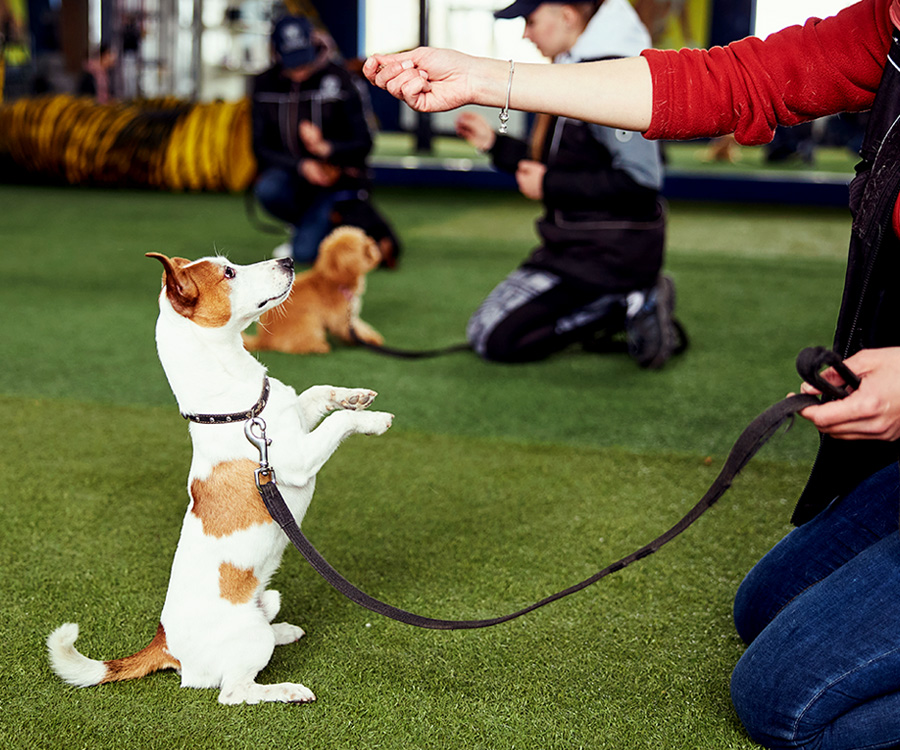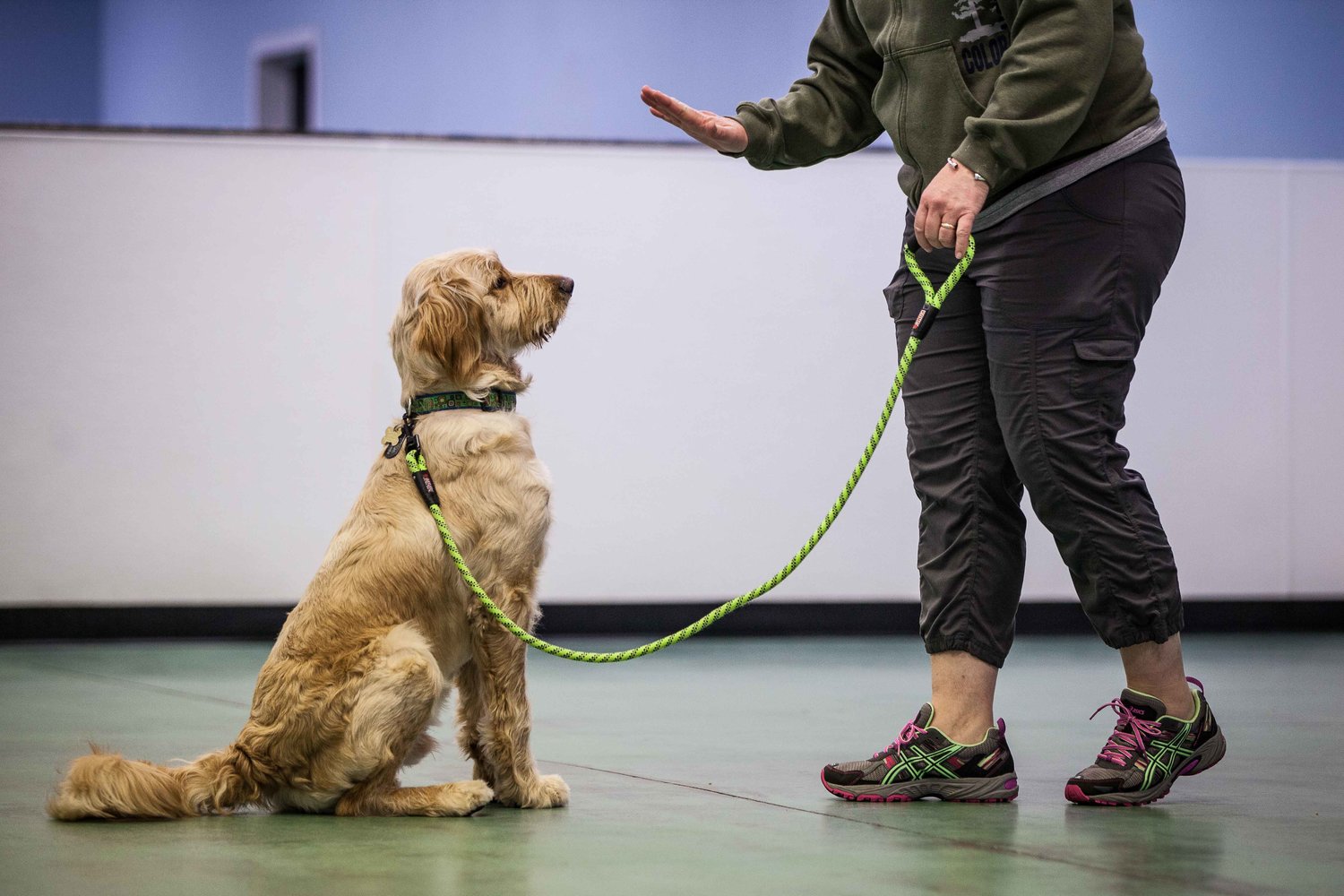Essential Tips for Successful Dog Training: A Guide for Beginners
Essential Tips for Successful Dog Training: A Guide for Beginners
Blog Article
Top Pet Dog Educating Techniques Every Proprietor Ought To Know

Favorable Reinforcement Strategies
Making use of positive reinforcement techniques is important for effective dog training, as it cultivates a relying on bond between the dog and the trainer. This method focuses on rewarding preferable actions rather than punishing unfavorable ones, producing an atmosphere for finding out. Benefits can include deals with, praise, or play, which motivate dogs to duplicate the habits that earn them these rewards.

In addition, this method improves the pet dog's enthusiasm for training sessions. They are much more engaged and responsive when dogs connect training with favorable experiences. Dog training. Past prompt actions alteration, positive support motivates a collaborative partnership in between the dog and instructor, reducing anxiety and worry
To maximize effectiveness, it is crucial to supply benefits immediately, making certain the dog connects the behavior with the reinforcement. Fundamentally, favorable support methods not just produce better-trained canines however likewise advertise a harmonious collaboration between canine and proprietor.
Clicker Training Technique
The remote control training approach is an extremely reliable strategy that develops upon the concepts of favorable support by adding a distinct noise to mark desired actions. This approach makes use of a small portable tool that generates a clicking sound, enabling instructors to connect with their dogs in a instant and clear way. When a pet executes an actions that the proprietor wants to encourage, the clicker is triggered, followed by a reward, generally in the form of deals with or appreciation.
The key to successful remote control training depends on consistency and timing. It is critical to click at the specific moment the desired behavior takes place, making certain that the pet links the noise with the activity and the succeeding benefit. This method not just improves communication but also fosters a more powerful bond in between the owner and the dog, as it encourages interaction and interaction throughout training sessions.
Clicker training can be put on a selection of behaviors and commands, from fundamental obedience to much more complex techniques. Its flexibility and effectiveness make it a popular method among specialist fitness instructors and animal proprietors alike, leading the way for a well-trained and responsive canine friend.
Leash Training Basics
Efficient leash training is crucial for making sure a satisfying and safe walking experience for both pets and their owners. Dog training. Chain training should begin very early and be come close to with patience and consistency. Begin by selecting an ideal leash and collar or harness. A level collar may function for some dogs, while others might gain from a harness that minimizes pulling.
Present your pet to the chain progressively, allowing them to explore it in a comfortable environment. Once they are accustomed, method loose-leash strolling. This entails fulfilling your dog for walking next to you instead of pulling in advance. Usage deals with and praise to enhance desired behavior, and make certain to stay assertive and calm.
If your dog starts to draw, stop walking instantly. In addition, method different strolling settings to assist your dog adjust to disturbances.
Routine technique will certainly strengthen your pet dog's understanding of leash decorum. Bear in mind that leash training is a recurring process; perseverance and consistency will yield the ideal results, cultivating a positive experience for both you and your canine buddy.
Socialization Techniques
Socialization is an important aspect of canine training that should preferably begin during puppyhood but can be helpful at any age. Reliable socialization aids dogs create confidence and minimizes the probability of behavioral problems. To implement effective socializing techniques, reveal your canine to a selection of environments, individuals, and other animals.
Beginning with controlled setups, such as young puppy courses or organized playgroups, where young pets can communicate securely. Slowly present your canine to brand-new experiences, including various sounds, surface areas, and tasks. Ensure these encounters are gratifying and positive to establish a complacency.
For adult pet dogs or those lacking direct exposure, begin with low-stress scenarios. Short, positive interactions with pleasant human beings and calm pet dogs can create positive associations. Utilize treats and praise to reinforce preferable habits during these experiences.

Consistency and Persistence
Identifying the value of consistency and persistence in dog training is important for accomplishing lasting outcomes. Irregular training can lead to complication, making it challenging for the pet to grasp commands or actions, inevitably impeding progression.
Dogs, like human beings, discover at their very own speed. This promotes a trusting relationship between the dog and proprietor, motivating a much more enthusiastic and ready learner.
To cultivate consistency and perseverance, establish a normal training regular, make use of the same commands, and guarantee that all member of the family apply the same training principles - Dog training. By doing so, you develop a secure review atmosphere for discovering, allowing your pet dog to create and grow right into a well-behaved companion
Final Thought
To conclude, reliable pet dog training methods, such as positive support, remote control training, and correct leash training, are vital for fostering a healthy and balanced owner-dog connection. In addition, applying socialization approaches and maintaining uniformity and patience throughout the training procedure contributes significantly to a pet dog's overall wellness. By incorporating these techniques, pet dog owners can promote the development of well-adjusted, loyal animals, inevitably improving the quality of life for both the pet and the owner.
Amongst the most prominent approaches are positive reinforcement, clicker training, and look at here chain training, each offering unique benefits that add to a well-behaved pet dog. As we explore these fundamental techniques, it comes to be apparent see this that understanding their subtleties can considerably impact the training experience and the pet dog's total behavior.Using favorable reinforcement strategies is vital for effective pet dog training, as it cultivates a trusting bond between the instructor and the pet.In final thought, effective canine training methods, such as favorable support, clicker training, and proper leash training, are crucial for promoting a healthy and balanced owner-dog relationship. By integrating these techniques, pet proprietors can promote the growth of well-adjusted, loyal pets, eventually boosting the top quality of life for both the owner and the canine.
Report this page